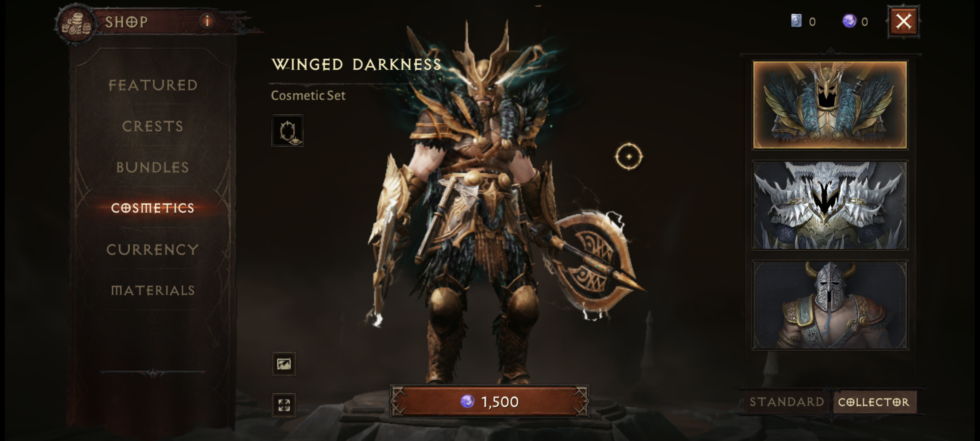
The best thing about Diablo Immortal is that it’s a fun, professionally crafted action RPG befitting the Diablo name. The new Activision Blizzard game, launching on iOS and Android on Wednesday and Windows PCs on Thursday, immediately impresses as one of the better smartphone-first ARPG games on the market. And my 10 hours in its universe have allayed my previous fears about its production values.
The worst thing about Diablo Immortal is its economy. My pre-release testing of the final game was marked with menus and in-game characters alike selling me new types of “orbs,” “stones,” gold, and other confusing microtransactions. At best, the game can be enjoyed despite this nonsense.
But the bean counters at Activision Blizzard aren’t willing to offer a one-time purchase in Diablo Immortal for fair, nag-free adventuring. (Worse, as of press time, the publisher appears to be doubling down on a famous 2012 fiasco.) That’s doubly tragic because the game is otherwise a fun, smartphone-friendly option for addictive dungeon delving—which leaves me stuck between recommending a perfectly fine smartphone adventure and warning about its ickiest aspects.
Driving a Rift between fans
I’ll start by getting to the microtransaction content since at least two nations have banned Diablo Immortal from their marketplaces ahead of its launch. The game indeed includes “loot boxes” that run afoul of regulations in the Netherlands and Belgium, though Diablo Immortal’s system differs from popular examples like EA Sports’ card packs or Fortnite‘s “llama” system.

Everything below relates to purchasing options related to Diablo Immortal‘s gameplay and mechanics, not cosmetics. If you like the idea of paying $10 to $15 to dress your favorite warrior in outlandish garb, that’s here as well. I believe those kinds of purchases prey upon children who equate flashier cosmetics in social video games with real-life social clout, but that’s tame compared to some of the stuff I’ve seen in Diablo Immortal.
-
On their face, Elder Rifts (no, not “Elden Rings”) seem like classic Diablo stuff. They add Interesting modifiers to a randomly generated dungeon run, and they reward cool, unique loot. But…
-
…the best loot requires spending “legendary crests,” which either take forever to grind via in-game mechanics or can be bought instantly with real-world cash.
The game’s linear, Diablo III-like introduction eventually leads players to a hub town, and its storefronts advertise the game’s full slate of in-game purchase opportunities. The loot-boxiest of these is the “Elder Rift,” which is a randomly generated dungeon delve. Players can “guarantee” the number and quality of each dungeon run’s rewards based on the number and type of “crests” they dump into its entrance. (When I say “rewards,” I mean stuff that your character can equip for special offensive or defensive abilities. The first one I earned gave all of my attacks a 10 percent chance to add an electric spark that chained to nearby foes. Stuff like that.) Lower-level crests can be earned in-game, while “legendary” crests must be purchased with real-world money (after players are forced to burn through one free legendary crest).
Imagine a loot box that requires a 5–10 minute spike in challenge to see the randomly awarded loot inside, and you’ve got legendary crests in a nutshell. To Activision Blizzard’s credit, if a player elects to use a crest and then either fails an Elder Rift challenge or gets disconnected from the game’s always-on servers, the crest is refunded.
https://arstechnica.com/?p=1857419

